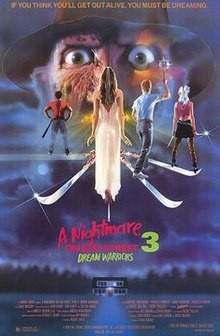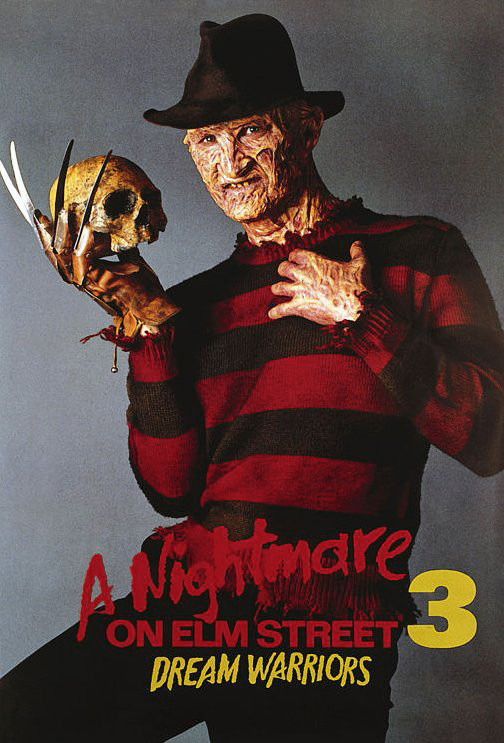Wait a minute. Let’s get this straight. The idea that an eighties slasher sequel can offer more than just cheap thrills? It might sound surprising, especially when diving into the realm of horror franchises. But, within the landscape of 1980s horror, A Nightmare on Elm Street 3: Dream Warriors carved out a unique space, offering audiences a blend of inventive scares and surprisingly resonant themes.
To truly understand the enduring appeal of Dream Warriors, it’s essential to delve into the core reasons why horror, as a genre, captivates us. Beyond the surface level shocks and gore, horror often taps into deeper anxieties and fascinations. For many, including myself, the draw to horror wasn’t initially about seeking out darkness, but rather exploring something more profound.
From a young age, most of us grapple with the big questions: life, mortality, and our place in the universe. We become aware of our existence, our bodies, and the often-confusing world around us. Simultaneously, we learn about the inevitable end to it all – a concept that can be deeply unsettling. Science fiction offered an escape into futures unknown, possibilities beyond our immediate reality. But horror? Horror opened a different kind of door.
Horror films suggested that perhaps reality wasn’t so neatly defined. Maybe there were forces beyond our senses, things unseen and unheard. Could that old house actually be haunted? Could a person be possessed? These questions, posed by horror, implied that death might not be the absolute end. If monsters lurked in the shadows, what other wonders – or terrors – could exist beyond the veil of the everyday?
My early encounters with horror came through the Universal classics. Consider Dracula. Cursed to a nocturnal existence, he was undead, defying the finality of death itself. The Wolfman, another figure of tragic horror, transformed into a powerful creature under the full moon, showcasing a dark magic in the mundane world. Even Frankenstein, through science twisted towards the macabre, conquered death by reanimating life. These stories, while chilling, offered a glimpse beyond the finite.
As I grew older, the slasher era of the 1980s exploded onto the scene. While often less overtly supernatural than the classic monsters, slashers still grappled with mortality. Watching these films became a way to confront violence and death from a safe distance, a vicarious dance with fear that allowed viewers to emerge, shaken perhaps, but alive.
By the mid-1980s, I was deeply immersed in the horror genre. It was a vibrant and exciting time to be a fan, a period with a certain innocence that’s hard to recapture. Stephen King dominated horror literature, his terrifying visions bleeding into cinema. But in the realm of horror movies, one figure reigned supreme: Freddy Krueger.
Wes Craven’s A Nightmare on Elm Street struck a nerve with audiences in a way few horror films had before. The concept of a disfigured child murderer invading our dreams, a space considered inherently personal and safe, was truly radical and deeply disturbing. Beyond the immediate scares, the film touched upon resonant themes – the hidden sins of the parents manifesting as psychological torment for their children. This subtext resonated with a generation grappling with complex family dynamics and societal anxieties.
While the first Elm Street sequel had its merits, A Nightmare on Elm Street 3: Dream Warriors delivered precisely what fans craved.
 Dream Warriors poster featuring Freddy Krueger and the teenage protagonists
Dream Warriors poster featuring Freddy Krueger and the teenage protagonists
The anticipation for Dream Warriors was immense. Fangoria magazine, a bible for horror fans, dedicated significant coverage to the film’s production, showcasing tantalizing images and behind-the-scenes details. The trailers promised spectacular visuals and inventive nightmare sequences, and the final film lived up to the hype. Dream Warriors embraced a more overtly comedic tone than the previous Elm Street films, but by this point, audiences were ready for a wilder, more thrill-ride oriented experience with Freddy at the helm.
I experienced Dream Warriors multiple times in theaters, captivated by its blend of horror and dark humor. Through countless viewings on VHS and DVD, the film became deeply ingrained in my consciousness. The visual style of Dream Warriors, particularly in its dream sequences, remains striking. The film boasted state-of-the-art practical effects, brought to life by nearly fifty artists who crafted makeup, props, mechanical creations, stop-motion animation, and puppetry. This dedication to practical artistry resulted in truly memorable and terrifying nightmare landscapes. Dream Warriors was a massive success for New Line Cinema, solidifying Freddy Krueger’s status as a horror icon.
Wisely, the producers brought back Heather Langencamp and John Saxon, reprising their roles from the original Nightmare on Elm Street, providing a link to the beloved first film and adding weight to the narrative. The screenplay also benefited from the involvement of Frank Darabont, who would later become a celebrated director in his own right.
As a teenager moving into my twenties when Dream Warriors was released, I felt a kinship with the film’s teenage protagonists. They felt like kindred spirits, battling their inner demons and external threats. The troubled teens in the film banded together to confront the psychological scars left by their parents’ actions, a struggle that mirrored the challenges faced by many young people navigating a complex and often unforgiving world.
Dream Warriors, while containing terrifying elements, isn’t solely focused on scares. For many horror aficionados, it’s more of a thrilling and entertaining ride. It’s a film that delivers spectacular set pieces, dark humor, and outrageous scenarios. We went to see Freddy unleash his sinister creativity, but we also genuinely rooted for the “dream warriors,” empathizing with their plight. Their battles against Freddy in the dream world resonated with the personal struggles of adolescence and young adulthood.
Looking back at that period of my life and the friends I shared it with, the parallels with Dream Warriors become even clearer. Some of us navigated those turbulent times successfully, while others succumbed to various pitfalls. The “nightmare-filled road of life,” as it were, presented us with challenges ranging from substance abuse to financial hardships and emotionally draining relationships. Like the battered but resilient dream warriors, we were often confused, angry, and searching for a way to overcome the obstacles in our path.
 Nancy Thompson and the Dream Warriors face Freddy Krueger
Nancy Thompson and the Dream Warriors face Freddy Krueger
Revisiting A Nightmare on Elm Street 3: Dream Warriors recently, I was struck not just by the film’s visual inventiveness, but also by the personal memories it evoked. The film’s release coincided with a tumultuous period in my own life, marked by personal insecurities and a lack of direction. Dream Warriors, in a way, offered a sense of strength and empowerment. It subtly suggested that by finding inner confidence and forging bonds with others, one could navigate life’s nightmares and achieve personal and professional growth.
This is the often-understated power of horror fiction. Beyond cheap thrills, horror at its best can offer catharsis, resilience, and even hope. Classics like It, Swan Song, The Light at the End, Ghost Story, Watchers, and Summer of Night can provide readers and viewers with strength and perspective. Even deeply disturbing horror like The Girl Next Door can steel us to confront the darkest aspects of humanity.
A Nightmare on Elm Street 3: Dream Warriors stands as a highlight of the 1980s horror boom. Its blend of practical effects, dark comedy, and relatable teenage protagonists captured the spirit of the era. While other fantastic horror films emerged from that decade, such as Evil Dead 2, Night of the Creeps, The Blob, The Fly, and The Lost Boys, Dream Warriors perfectly encapsulated the period’s energy and inventiveness. It remains a film that continues to inspire and resonate, proving that even within the realm of slasher sequels, there can be surprising depth and enduring appeal.
